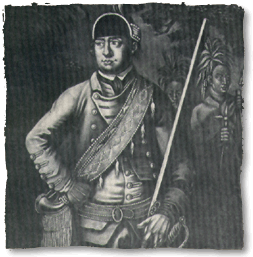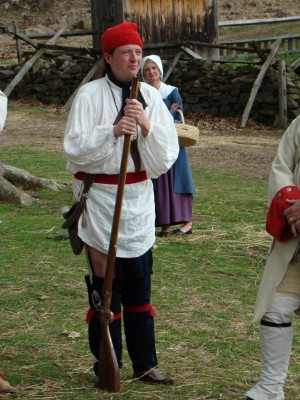The History
In 1755, Capt. Robert Rogers of Blanchard’s New Hampshire Regiment was called upon to organize a Ranger Company. Rogers’ Rangers were capable woodsmen and able to meet the French and Indians on their own terms. The Rangers were so successful that in the Spring of 1756, Rogers was called upon to organize a second company. Unlike the French and English, who stopped fighting during the winter, Rogers’ Rangers spent the winter attacking the French. These tactics made the Rangers a remarkable fighting force. In a sense, they were the first Green Berets.
If your interested in re-enacting this impression please contact Ken Tanner. Ken will take the time and help you with you kit and make sure you complete your impression correctly. nattan93@verizon.net

Milice de St. Jean
During the last of the so called French-Indian Wars, (1754-1760) the colonial government of New France called upon its civilian population to help aid in its defense from the British. Each able bodied man ages 16-60 were required to be listed on there local parishes muster rolls. Once these men gathered at there parish, they were then issued clothing and equipage from the kings storehouse. The milice didn't have military uniforms, instead they appeared much like there native allies. Two White shirts, cloth to make leggings, breechclouts, waist sashes, and oxhide moccasins were issued. A red knitted cap common among Canadians was also worn. The milicians would bring there wepons from home and exchange them for the French made Fusil de Chasse, a lightweight smoothbore hunting musket perfect for warfare in the forests of North America. A leather shot bag and powder horn would be used as well.
The milice were used in all major theaters of the war, mostly as woods fighters and along with the French allied Indians tribes, made quite a good account of themselves.
We portray the Canadians from the area around Ft. St. Jean. The fort was originally built in 1666 and was an important communications hub for French General The Marquis de Montcaim.

Useful Links
Fort Ticonderoga
F & I 250th Events
Fort # 4
Fort Pitt
National Park Service
Colonial Plantation
Fort Frederick